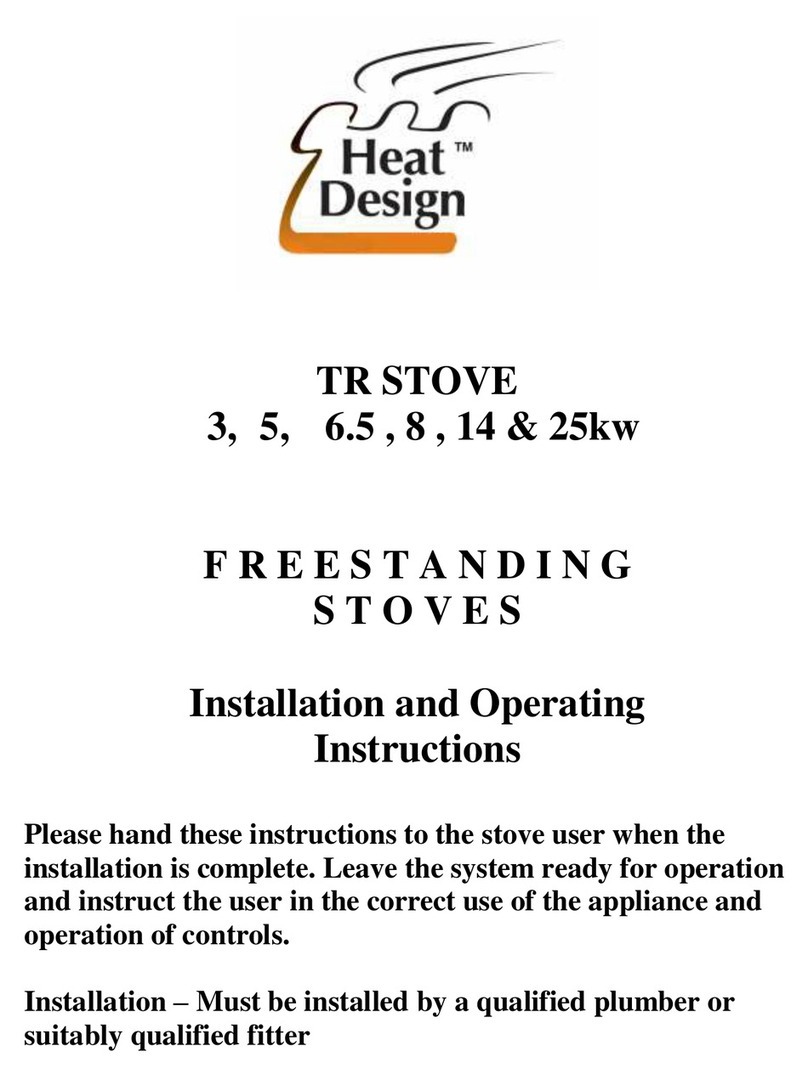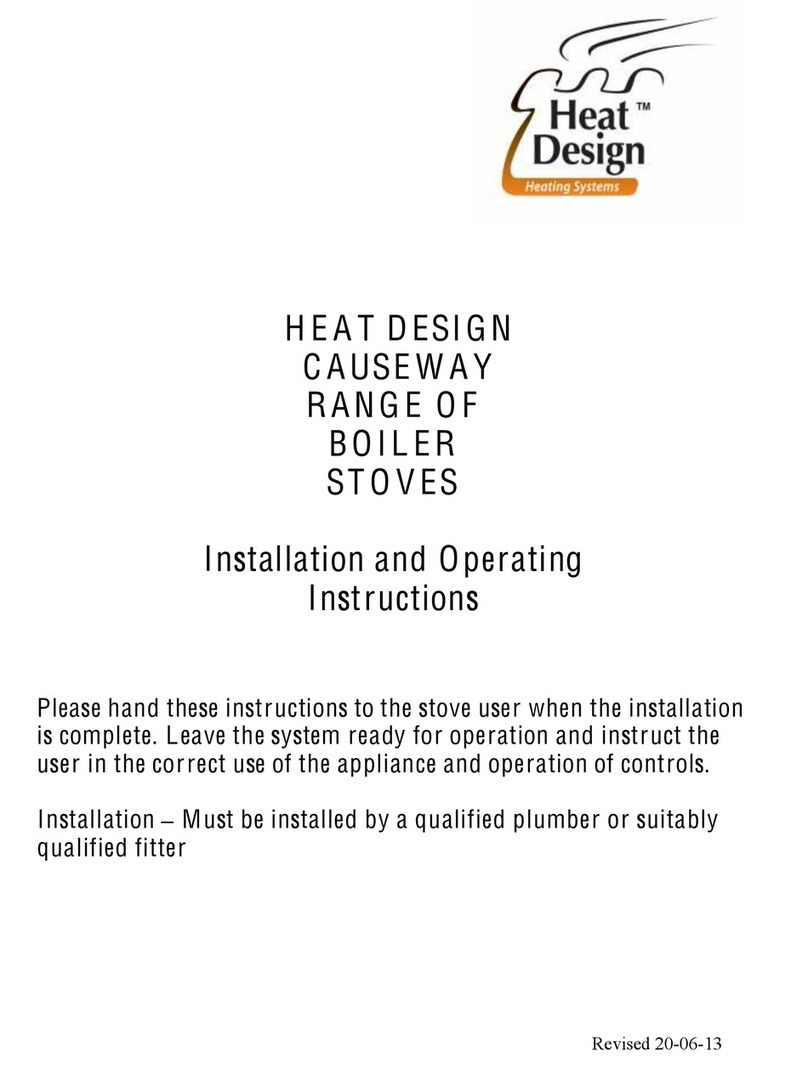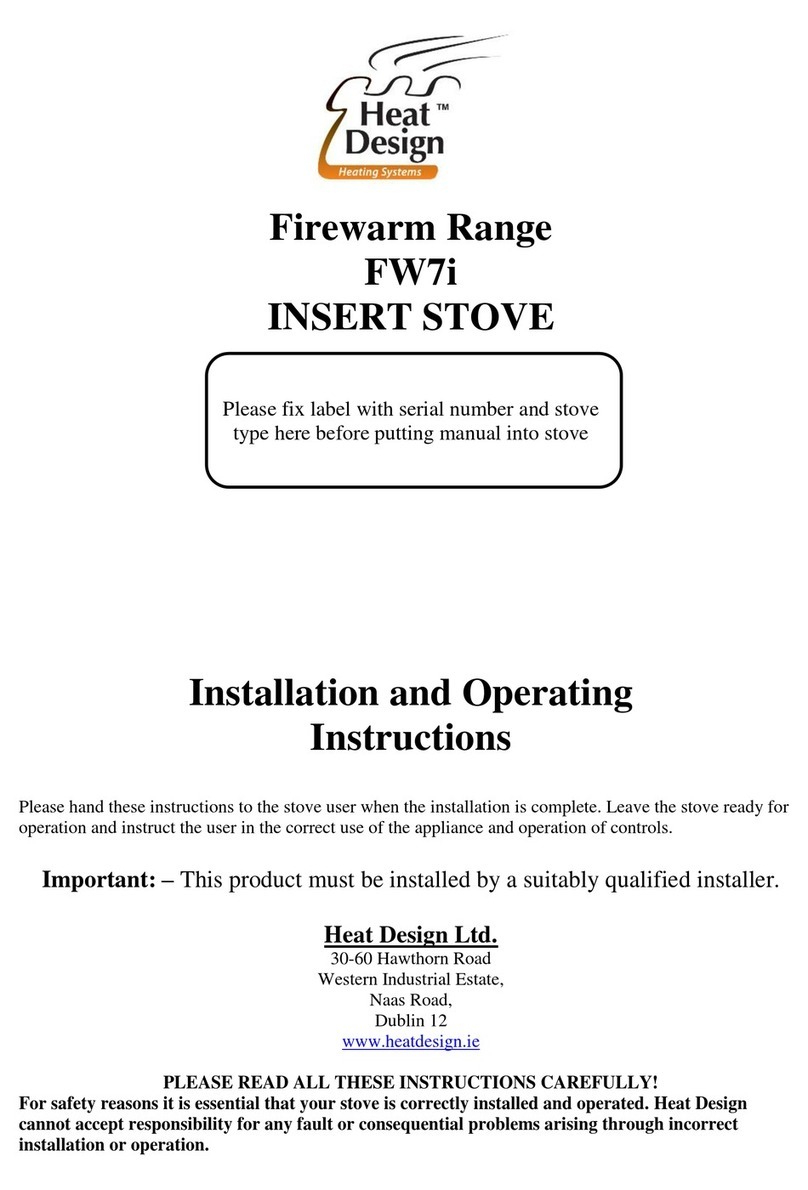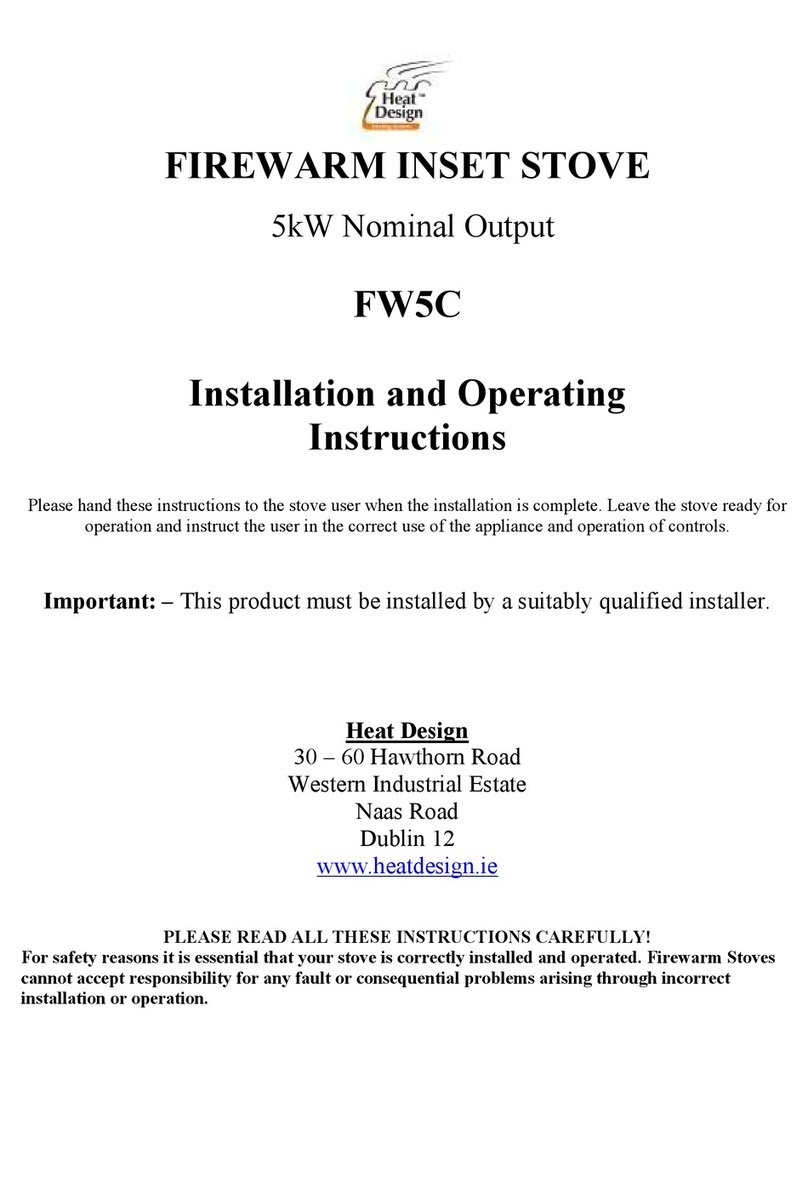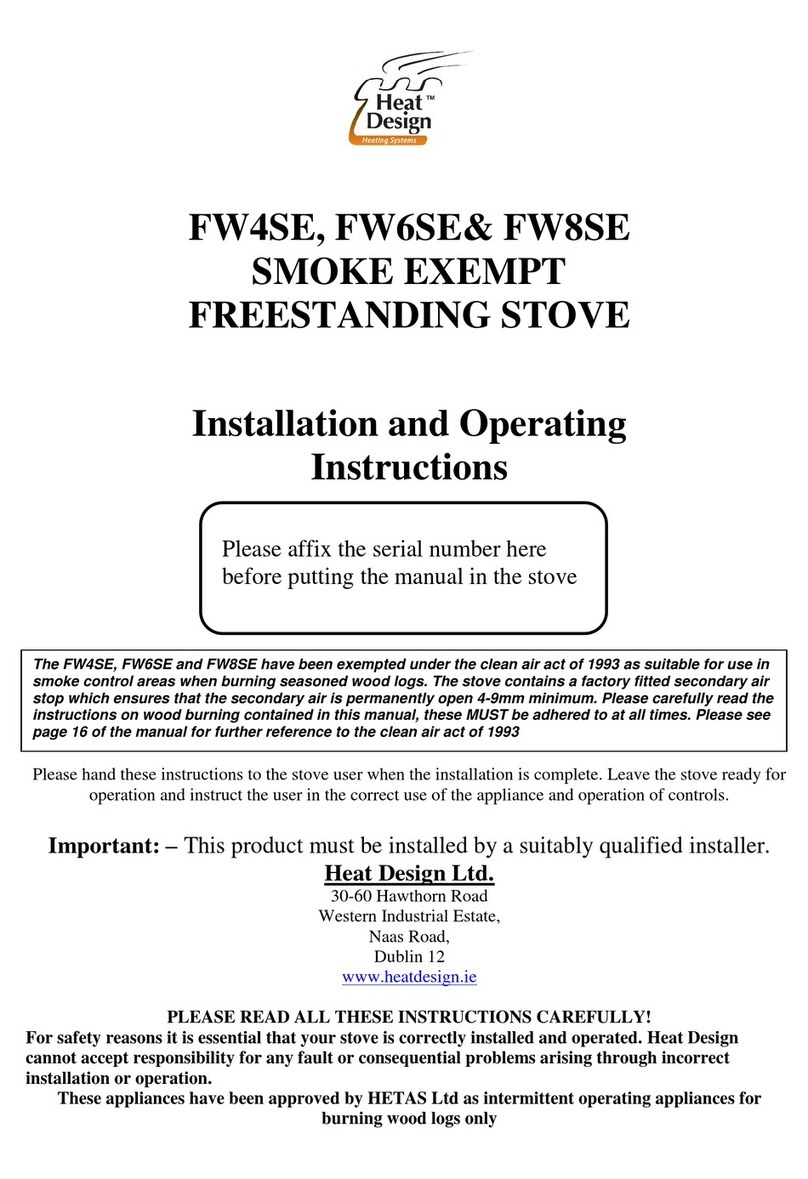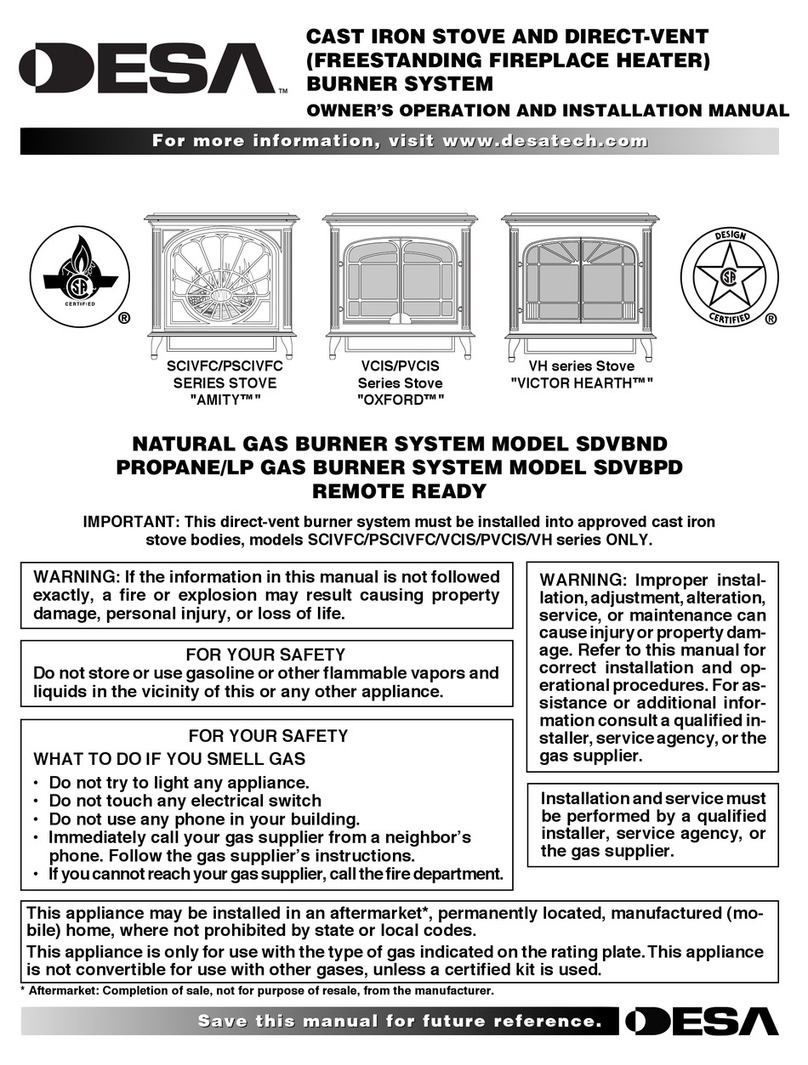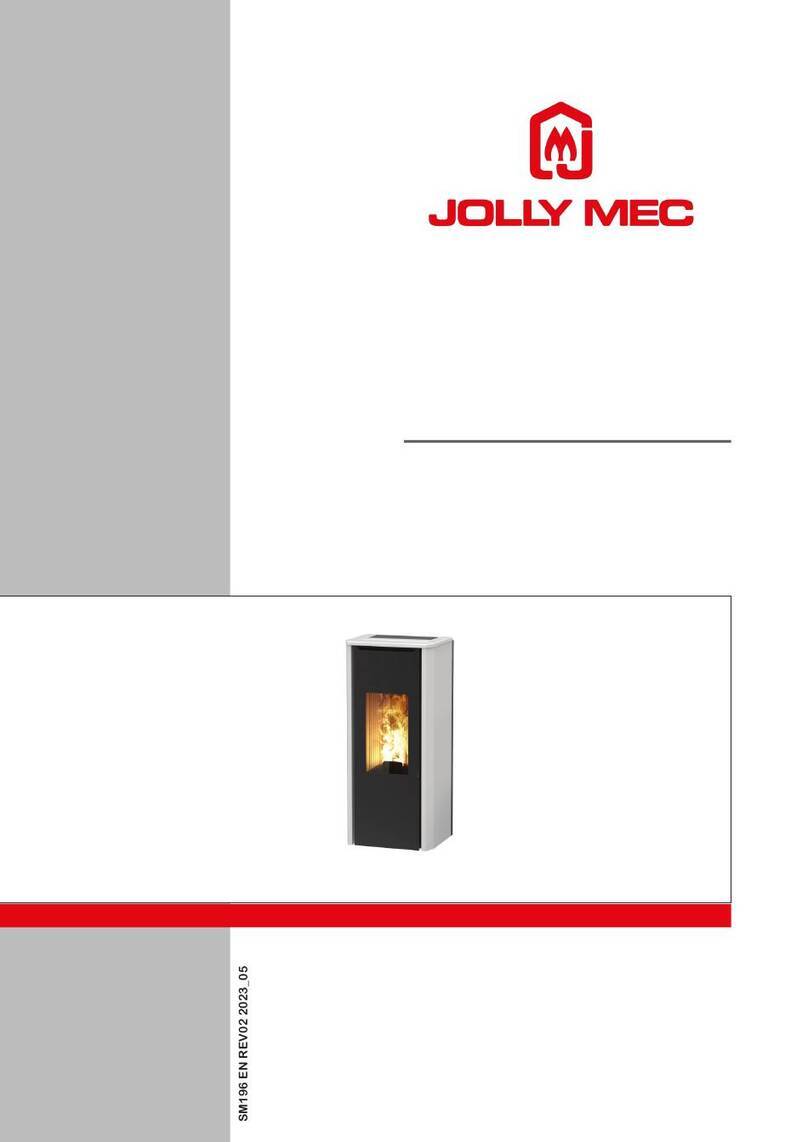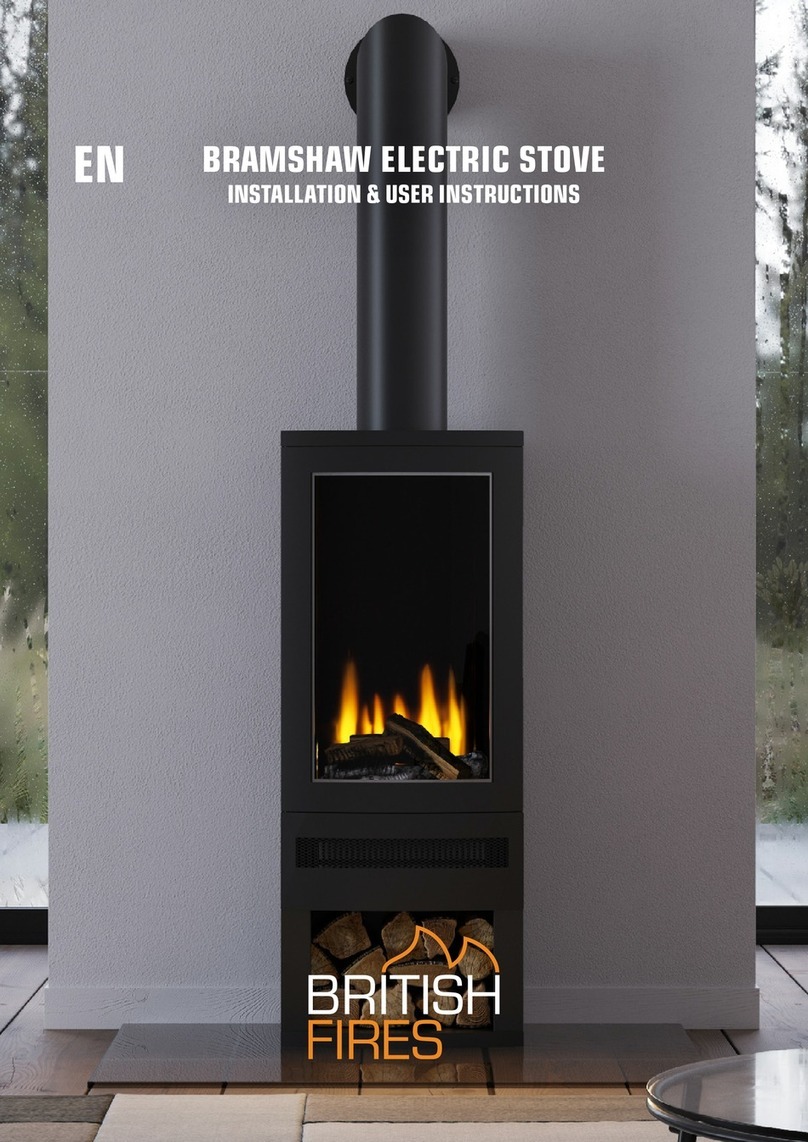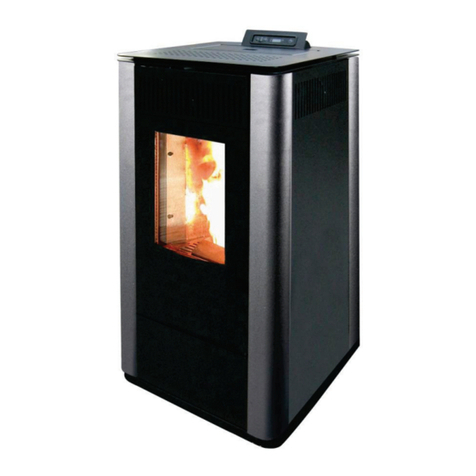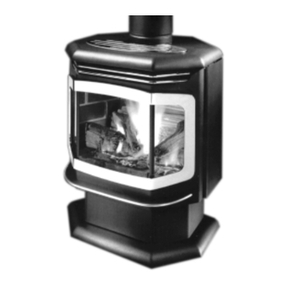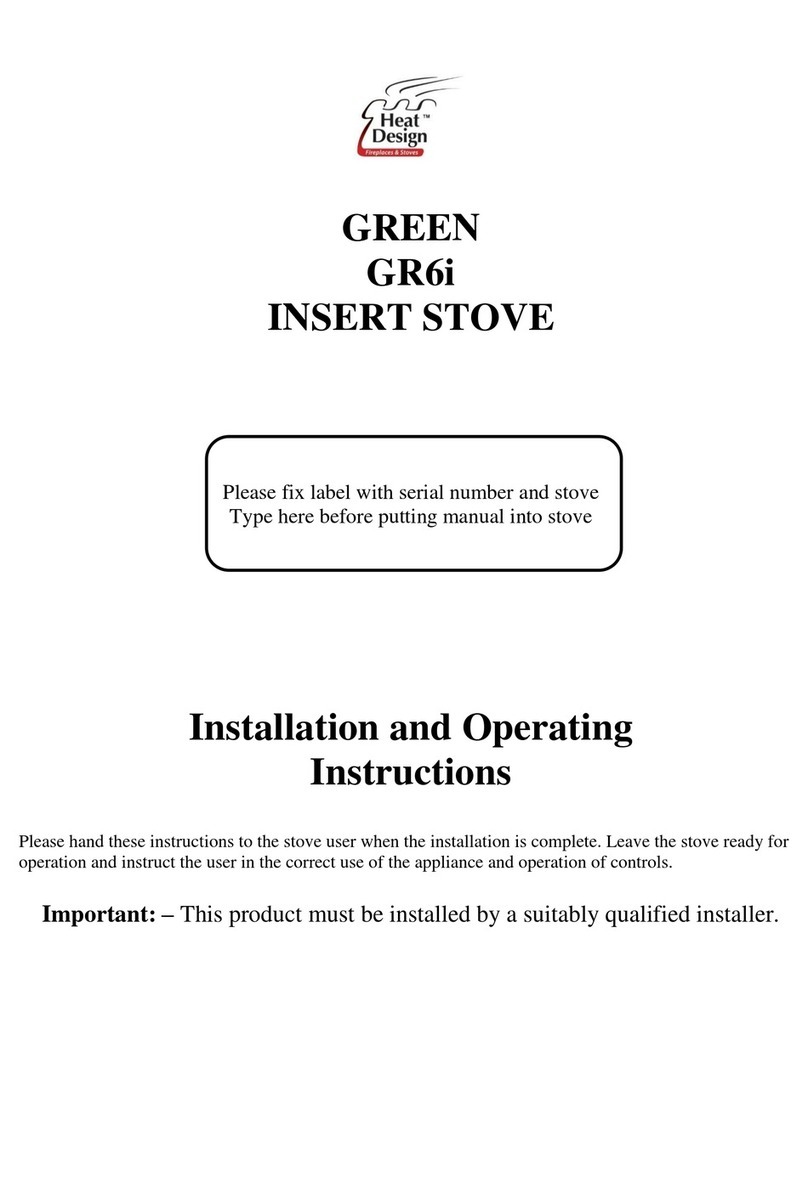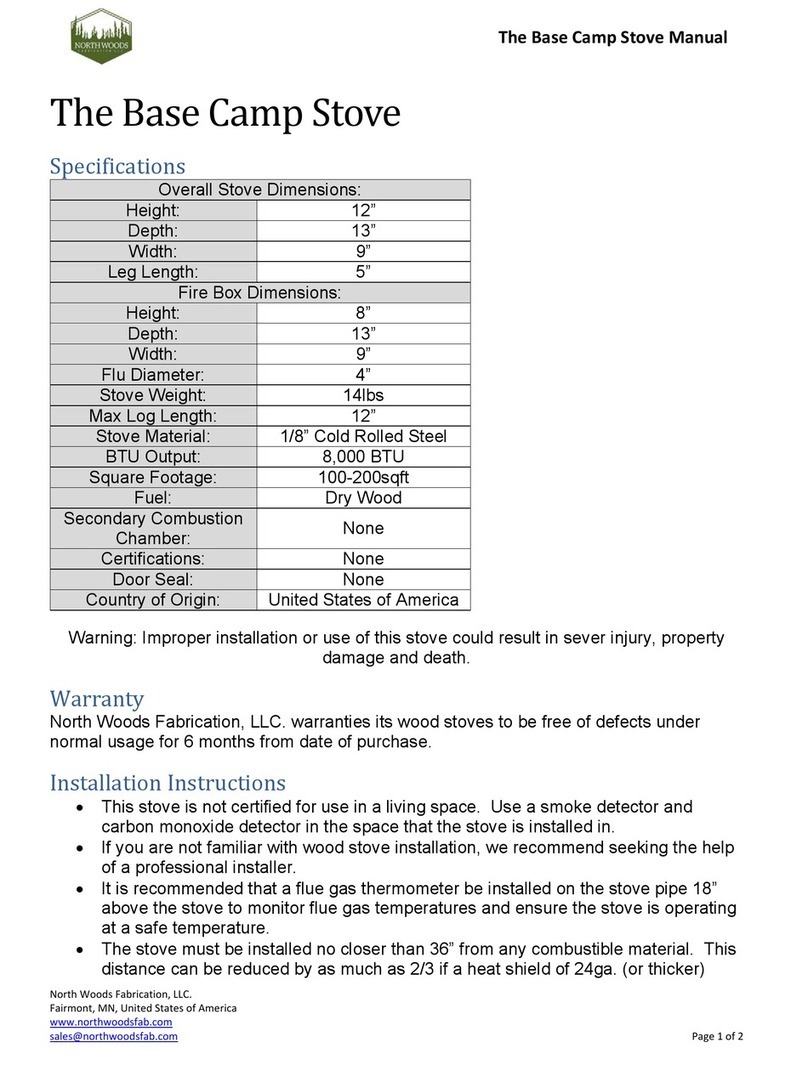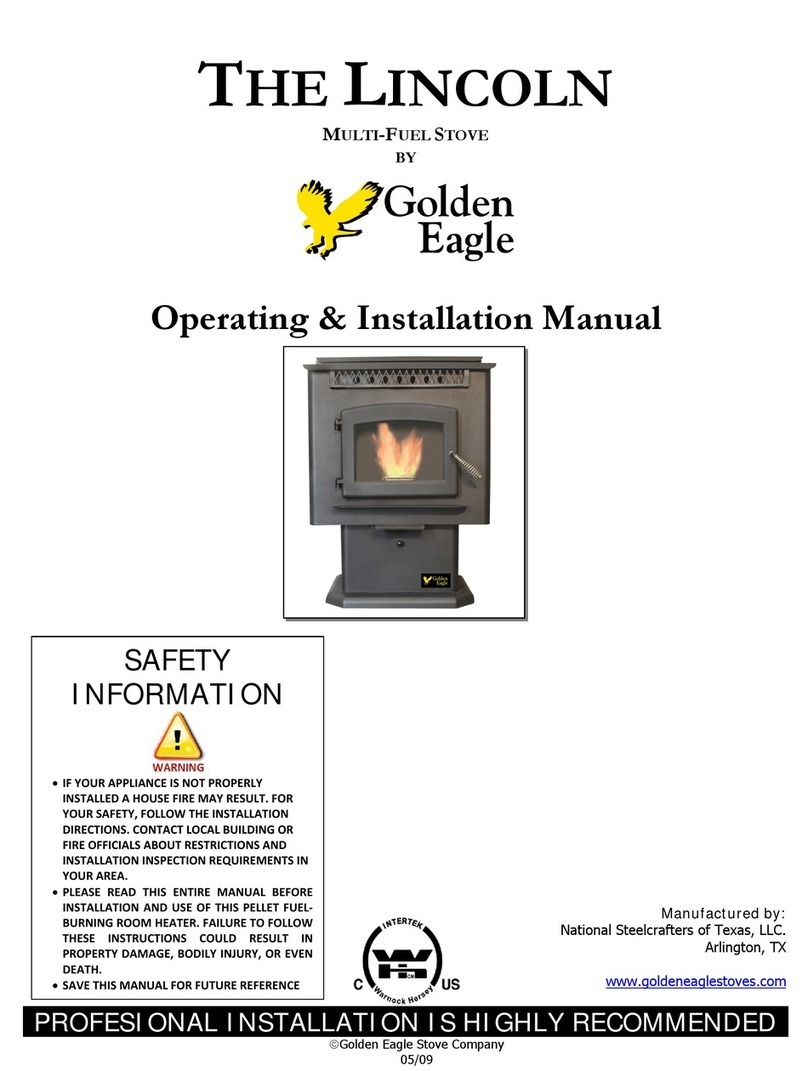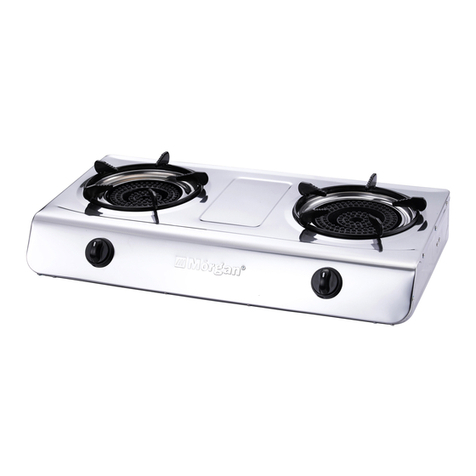7FW11C 18-12-12
collar of the stove and seal between the collar and the inside using fire cement. It is important
this joint is airtight for proper operation of the stove.
(vii) Replace the door, baffles, liner and grates by completing step (iii) in reverse.
B –Installing a stove into a chimney that is already lined (see Fig. 4 or Fig. 5)
(i) The integrity of the chimney must be thoroughly inspected and verified by a suitably qualified
professional.
(ii) Ensure the fireplace is suitable for the stove. The opening should measure 410-480mm wide,
550-580mm high and a minimum of 350mm deep. The fireplace must be suitable for solid fuel.
The hearth must be level. The fireback needs to be removed and there needs to be a solid base
under the fireback, level with the hearth as the stove will need to be secured to this.
(iii) Push a 6” to 8” adaptor (or offset adaptor if needed) up into the clay flue liner and seal using fire
cement. Push the required length of single wall or flexi liner onto the adaptor. If single wall is
being used push a 20° single wall angle onto the end of the straight length and support this in
preparation for the stove. If flexi flue is being used fit a flexi-adaptor to the flexi liner and seal on
the inside between the flexi liner and flexi adaptor with fire cement. It is important this joint is
airtight for proper operation of the stove. Leave the flexi liner and adaptor hang down and the
opening is now ready for the stove to be fitted.
(iv) Remove the lower baffle from the stove by lifting the front of the baffle and pull it forward a
little which will allow it to drop down and be easily removed from the stove and put to one side.
Carefully remove the firebricks and place to one side. Note the fire bricks can be brittle
(especially after use) so handle with care. Remove the ash pan. Remove the screw form the
bottom of the riddle grate and remove the riddle grate from the stove. Lift the grate to expose the
four fixing holes. Also loosen the two screws securing the top baffle and pull the baffle forward
until it drops down and remove it. The front door can also be easily removed before lifting into
position if desired.
(v) Lift the stove into position taking care not to scratch the hearth and push into the opening until
the front trim is up against the front of the opening. Drill through the four holes in the base of the
appliance into the concrete base under the appliance using a 5.5mm concrete bit. Use the four
screws and washers provided to fix the appliance securely.
(vi) Fill any void at the back or sides of the box with 6:1 vermiculite / cement mix or any other good
quality non-combustible insulation material. It is important that the back and sides of the box are
well insulated.
(vii) Always use a minimum of 600mm of single wall connecting flue between the stove and the
flue where possible. Connect the single wall or flexi flue adaptor to the collar of the stove and
seal between the collar and the inside using fire cement. It is important this joint is airtight for
proper operation of the stove.
(viii) Replace the door, baffles, liner and grates by completing step (iii) in reverse.
Commissioning and Handover
Upon completion of the installation, allow a suitable period of time for any fire cement and mortar to
dry out. A small fire may then be lit and checked to ensure the smoke and fumes are taken from the
stove up the chimney and emitted safely to atmosphere.
Advise the customer not to run the stove at full output for at 3 –4 days. Explain that the stoves can
provide much more or less than their rated heat outputs depending upon how they are burnt and fuels
and fuel loads used.
On completion of the installation and commissioning, ensure that the operating instructions and
operating tools (including glove) for the stove are left with the customer. You must be sure to advise
the customer on the correct use of the appliance with the fuels likely to be used on the stove and
warn them to use only the recommended fuels for the stove.
Advise the user on what to do should smoke or fumes be emitted into the room from the stove –see
Safety Notes section. The user should be warned that they MUST use a suitable fireguard in the
presence of children, aged and/or infirm persons.

















